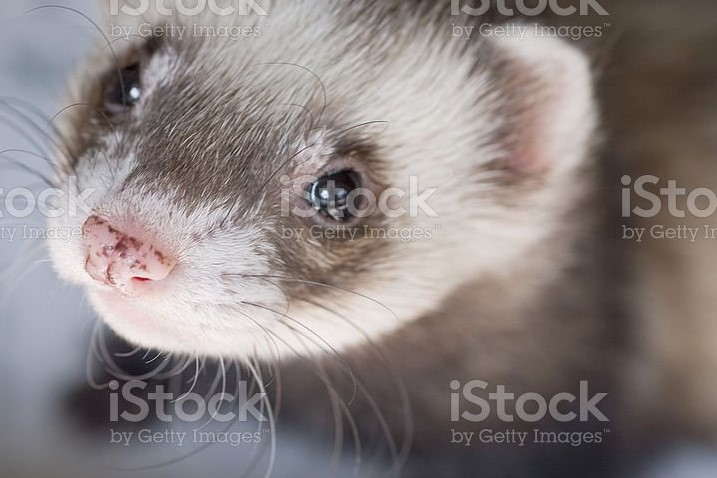
7 Hypoallergenic Cats for Feline Fanatics
Despite having a cat allergy, I still want to adopt one. Are you concerned about family members who might have a cat allergy? Don’t worry about it. Allergies won’t stop you from adopting a cat. Even though allergies can severely impair your life, you shouldn’t be unable to keep a cat. Thanks to hypoallergenic cat breeds, you may enjoy quality time with your pet without worrying about allergies.
A glycoprotein called Fel D1, formed by the sebaceous glands beneath the skin and, to a lesser extent, found in cat saliva, is the main culprit of cat allergies.
A cat frequently releases tiny skin flakes, or dander, into the air. They will also occasionally groom themselves, transferring saliva onto their coats, which can subsequently shed and cause allergies in sensitive individuals.
How Can a Cat Be Hypoallergenic?
This particular cat breed produces fewer of the allergy-causing proteins. While there isn’t a hypoallergenic cat breed, some people who sneeze and scratch around cats may be better off with a different breed. It is believed that over 20% of Australians suffer from allergies related to their pets, with cat allergies accounting for twice as many cases as dog allergies. But what’s bothersome are their skin flakes, pee, and saliva—collectively called dander—rather than their fur.
Sadly, choosing a hypoallergenic cat breed does not ensure that you won’t experience allergies ever again. It’s advisable to forego getting a cat entirely if you have a strong cat allergy. One of the following breeds might be OK if you have mild allergies. Even so, it’s advisable to set up a meet and greet before giving one of these adorable cats your entire life.
Here are the seven hypoallergenic cats for Feline Fanatics
@ Devon Rex

You’ll have a lot of fun with this naughty and loving species, especially if you have allergies. They nicknamed Pixie Cat because of its wide ears, large eyes, and elfin face. Devon Rex cats are short-haired, meaning they have less fur than other breeds and shed less, so you can play with them and give them lots of hugs even if their coat is silky and curly with three layers. They enjoy spending time with their owners and are lively, entertaining, and curious.
@ Cornish Rex

Cornish Rex cats are well-liked as pets because of their curly fur and loving disposition, much like the Devon Rex. They’re well-known for giving children lots of love and attention. With their curly coats needing frequent brushing, a high-energy Cornish Rex cat needs plenty of playing and exercise. As such, they may not be the ideal choice if you’re seeking a low-maintenance pet.
@ Oriental Shorthair

Cats with Oriental Shorthair coats appear sleek and refined. Because of their short coat, they are also excellent cats for allergy sufferers and require little grooming. You get the ideal balance of brains and playfulness when you bring home an Oriental Shorthair. They can be entertaining companions, enjoy socializing, and have a unique meow that resembles a cute goose honk. They are well-known for their liveliness and curiosity.
@ Siamese

Siamese cats are also hypoallergenic. Although this blue-eyed cat has a short coat that doesn’t shed much, there are no non-shedding cats. Consequently, compared to some other breeds, they don’t create as many allergies. Siamese cats are brilliant, loving, and vocal cats who are well-known for their vocalizations. Nevertheless, families that travel frequently may find them to be an inappropriate choice due to their attention requirements.
@ Siberian

One common hypoallergenic breed is the Siberian. They generate fewer allergen-causing proteins than many other cats, even though they have long, thick hair. Siberians are amiable, cuddly, excellent family pets, and superior allergy-tolerant cats—that is, assuming you can maintain their frequent grooming requirements.
@ Balinese

This graceful breed, also called the long-haired Siamese, has striking blue eyes and a lovely, velvety coat, among many other similarities. The Balinese have a single-layer coat, so they do not shed much, but they do require weekly brushing. You may play with this entertaining cat for longer because it produces less of the Fel D1 protein than other cats. The breed is lively, curious, and talkative, much like the Siamese.
@ Bengal

With its thick, spotted coat, this short-haired cat makes a statement, like a wildcat. In addition to being gorgeous, its coat sheds less than other breeds, which makes it simpler to manage your allergies. The breed is friendly and loving, but they also need room to run, jump, and climb because they are such an active and energetic breed. Nevertheless, they make excellent companions. Although it’s preferable to introduce them as kittens if there are children in the house, they enjoy the company and will want to play.
In addition, you can Bathe your cat every 15 days in addition to selecting a hypoallergenic breed. Baths remove many allergens from your cat’s coat, but they can also dry up their skin. Assign bathing duties to someone else.
Get another person to give your cat regular brushing, and dispose of any hair immediately.
Play carefully. After playtime, thoroughly wash your hands and pay attention to any scratches, licks, or rubs the cat may give you.
Don’t let your cat into the bedrooms; restrict their access.
Make sure to vacuum your house every few days as you clean it.
Open the windows to let fresh air in.
Keep your feline well. Your cat will shed less hair and create less dander the healthier it is.


